Hampi is beautiful beyond the ruins. The gentle wind breeze past the lush green fields. Tungabhadra flows quietly through the boulders. Ethereal sunsets takes place everyday. Gulmohar blooms provide a shady relief.
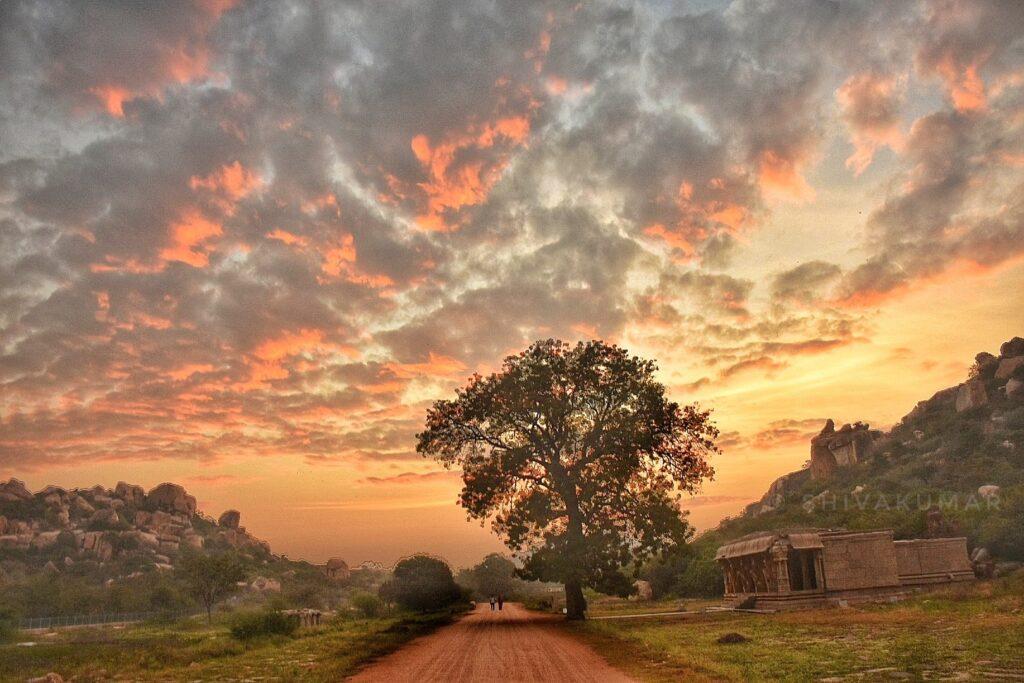
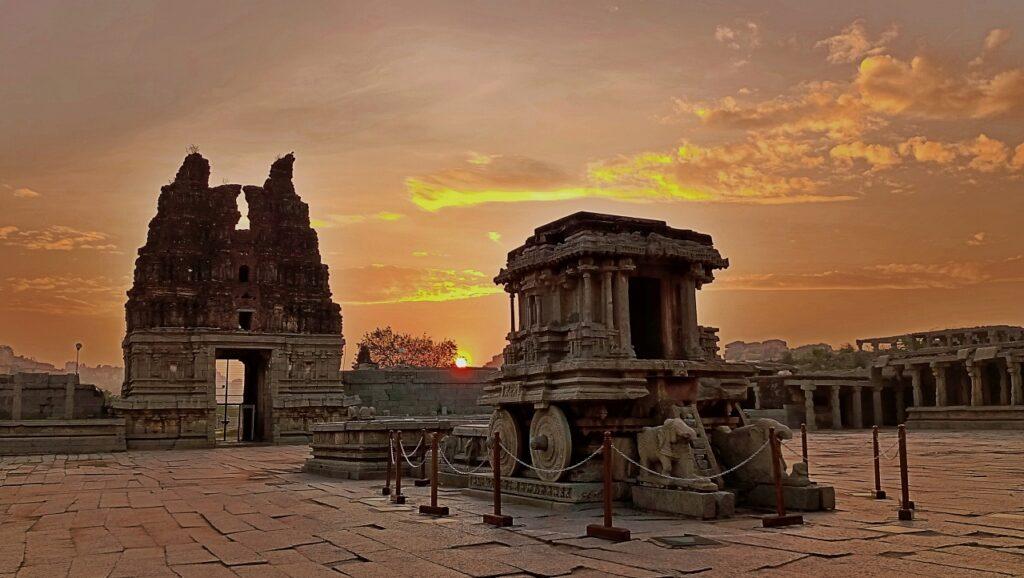
The grand site of Hampi comprises mainly the ruins of the capital city of Vijayanagara empire (14th-16th century), the last great Hindu kingdom. The property encompasses an area of 4187.24 hectares, located in the Tungabhadra basin in Central Karnataka, Vijayanagara District.
Hampi’s spectacular setting is dominated by river Tungabhadra, rocky hill ranges and open plains, with widespread physical remains.
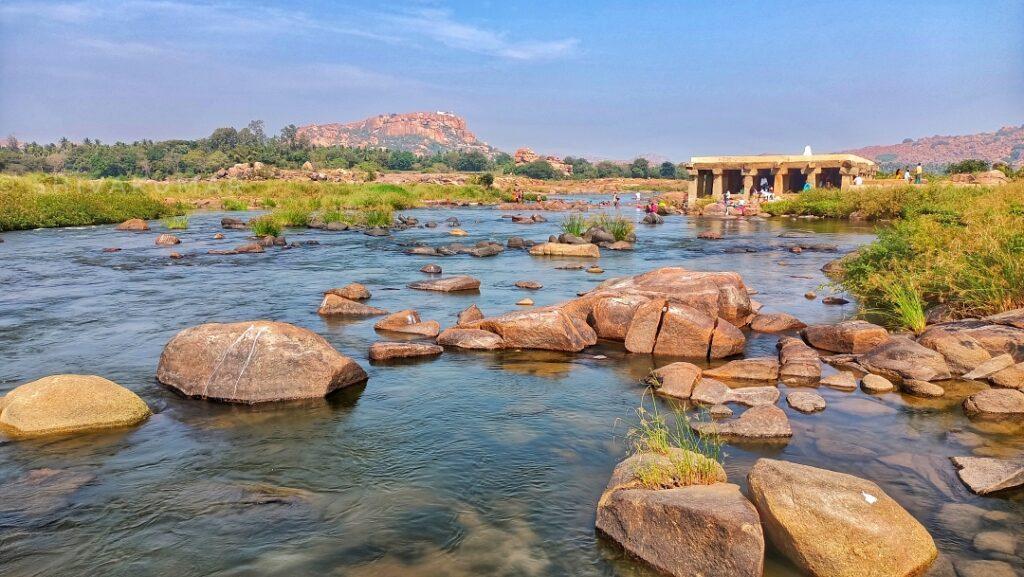
The sophistication of the varied urban, royal, and sacred systems is evident from the more than 1600 surviving remains that include forts, riverside features, royal and sacred complexes, temples, shrines, pillared halls, mantapas, memorial structures, gateways, defense check posts, stables, water structures, etc.
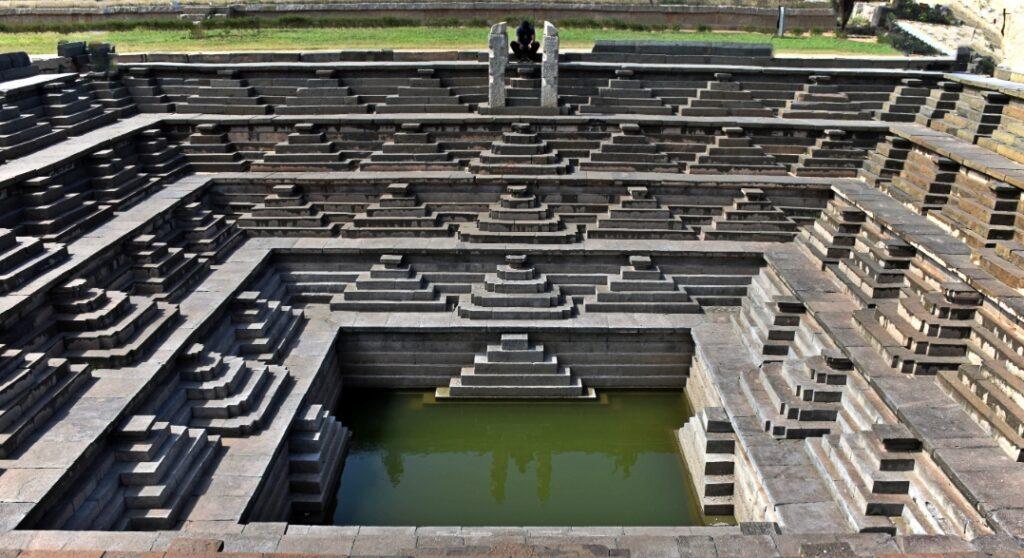
Among these, the Krishna temple complex, Narasimha, Ganesha, Hemakuta group of temples, Achyutaraya temple complex, Vitthala temple complex, Pattabhirama temple complex, Lotus Mahal complex, can be highlighted.
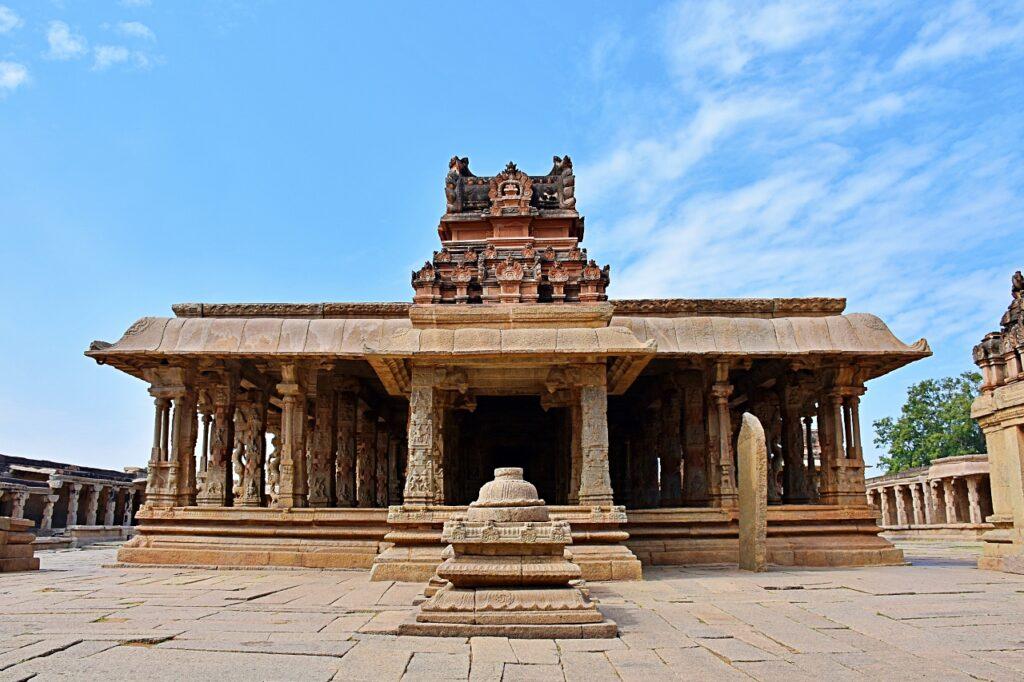
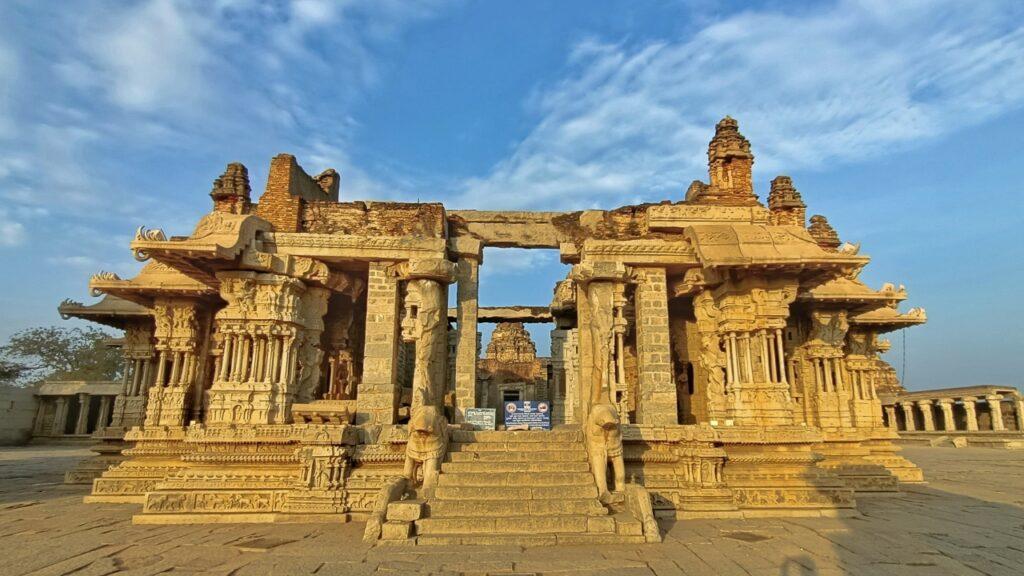
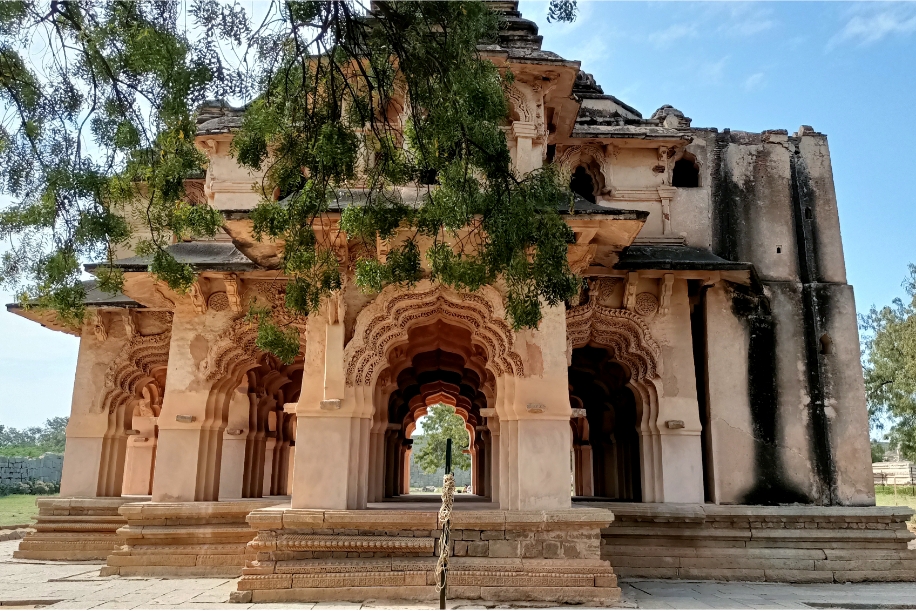
Dravidian architecture flourished under the Vijayanagara empire and its ultimate form is characterized by their massive dimensions, covered enclosures, and lofty towers over the entrances encased by decorated pillars.
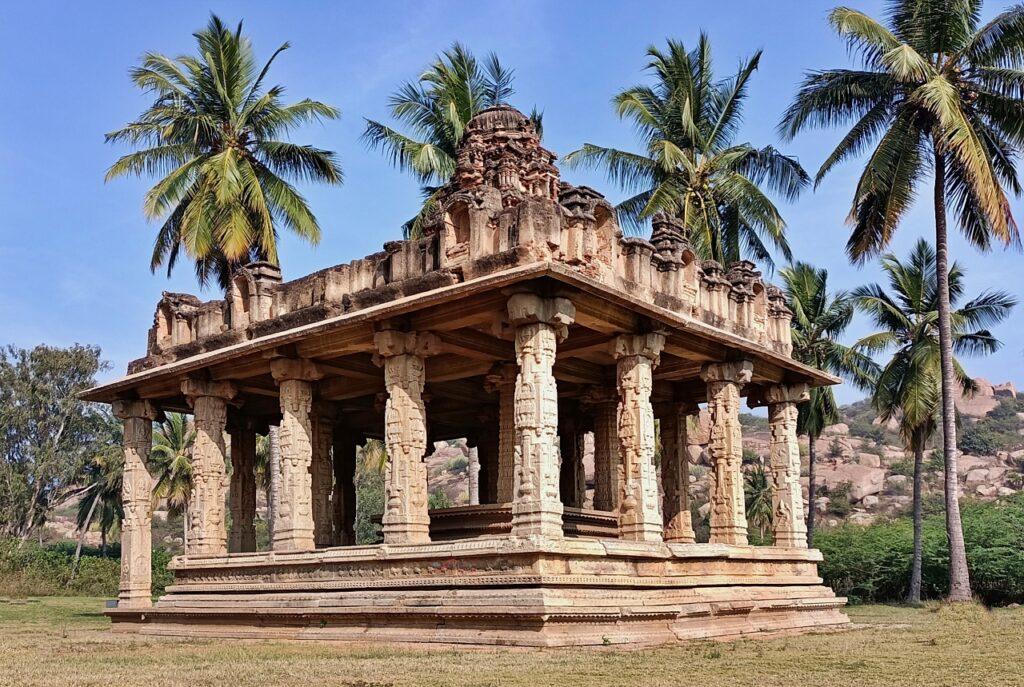
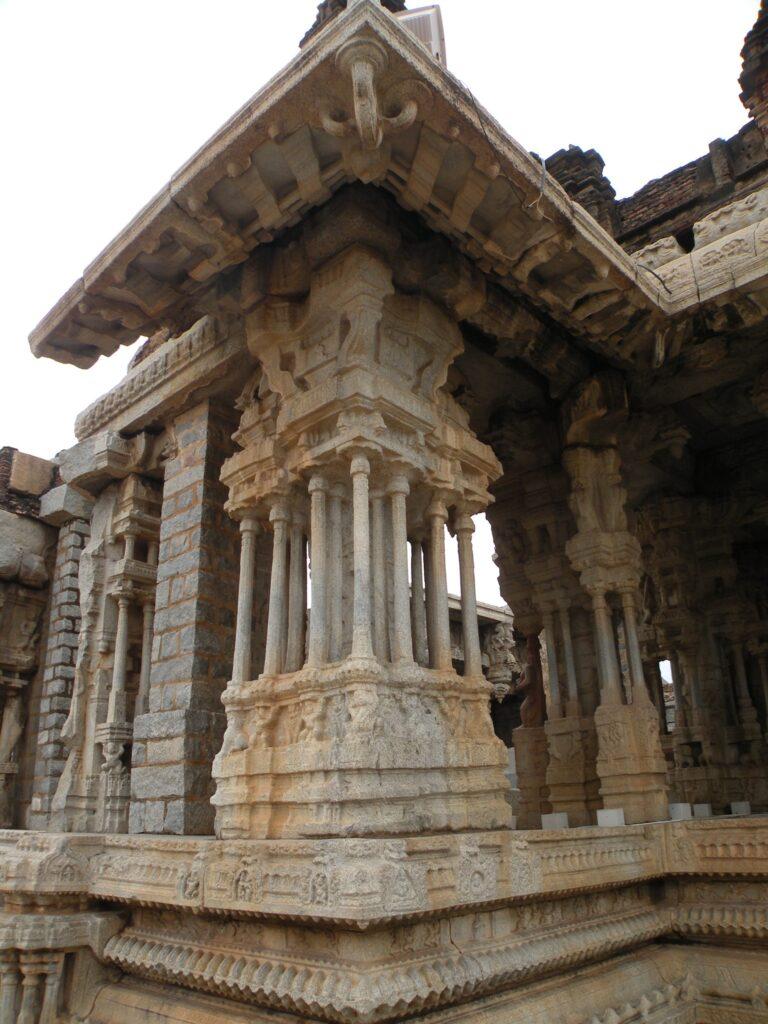
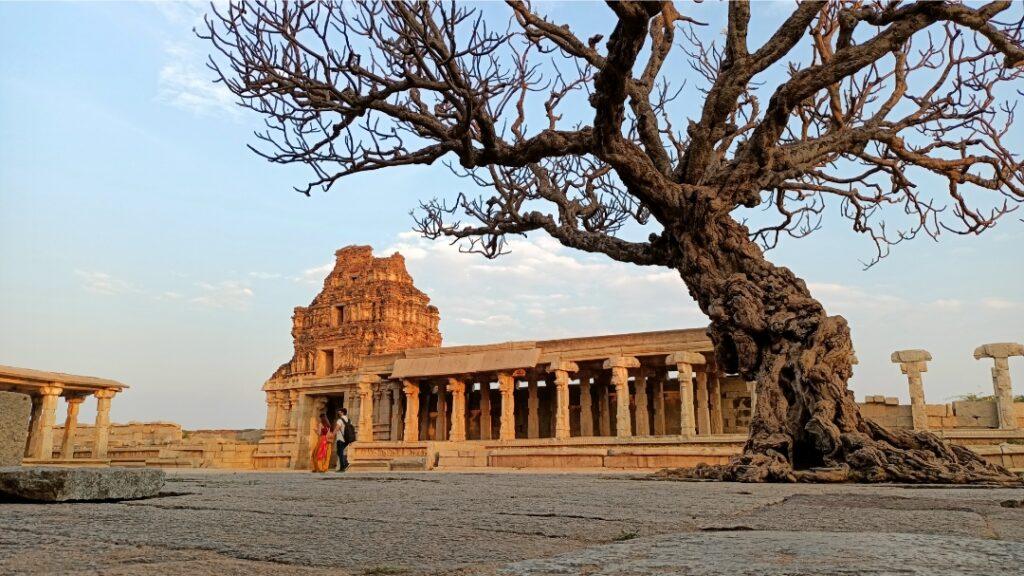
Another unique feature of temples at Hampi is the wide chariot streets flanked by the rows of pillared mantapas, introduced when chariot festivals became an integral part of the rituals. The stone chariot in front of the Vittala temple stands a testimony to its religious ritual.
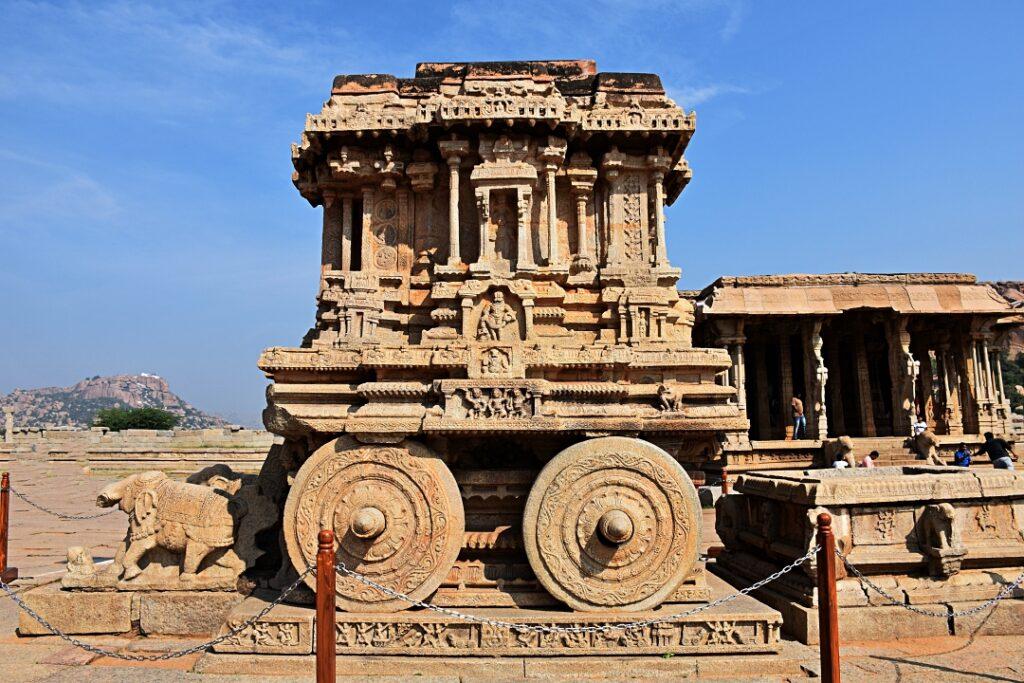
Most of the structures at Hampi are constructed from local granite, burnt bricks, and lime mortar. The massive walls have irregular cut size stones with paper joints by filling the core with rubble masonry without any binding material. The gopuras and the sanctum have been constructed with stone and brick. The roofs have been laid with thick granite slabs covered with a water proof course of brick and lime mortar.
Vijayanagara architecture is also known for its adoption of elements of Indo Islamic Architecture in secular buildings like the Queen’s Bath and the Elephant Stables, representing a highly evolved multi-religious and multi-ethnic society.
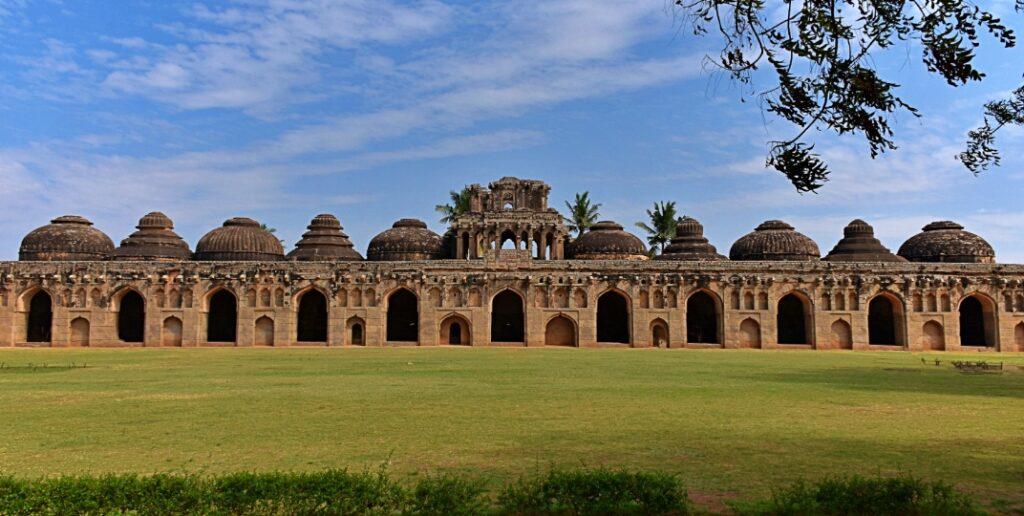
Building activity in Hampi continued over a period of 200 years reflecting the evolution in the religious and political scenario as well as the advancements in art and architecture. The city rose to metropolitan proportions and is immortalized in the words of many foreign travelers as one of the most beautiful cities.
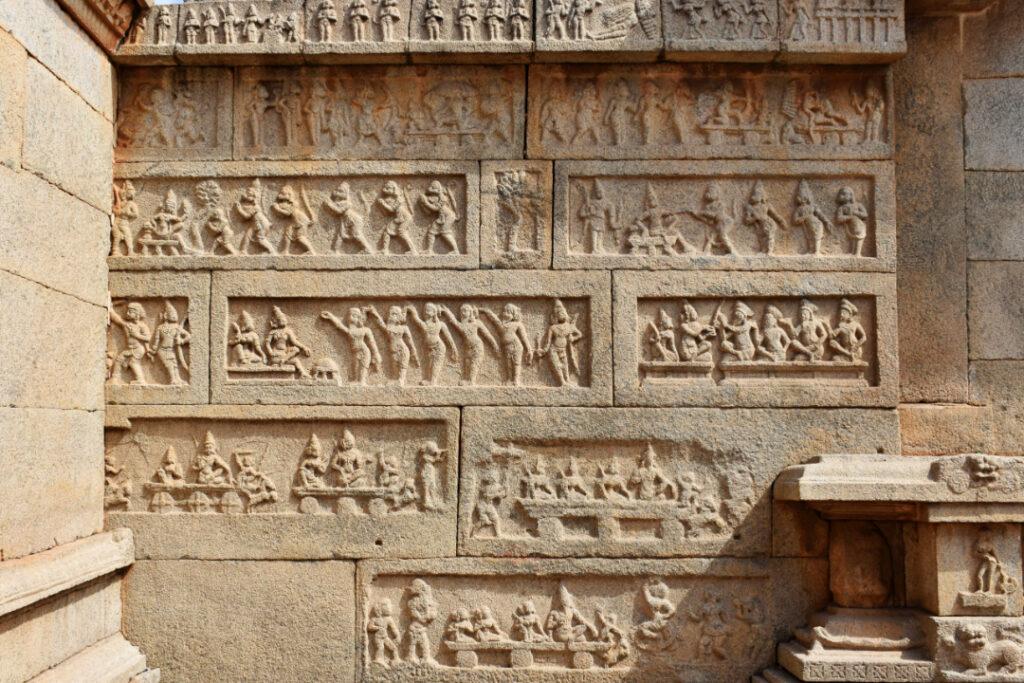
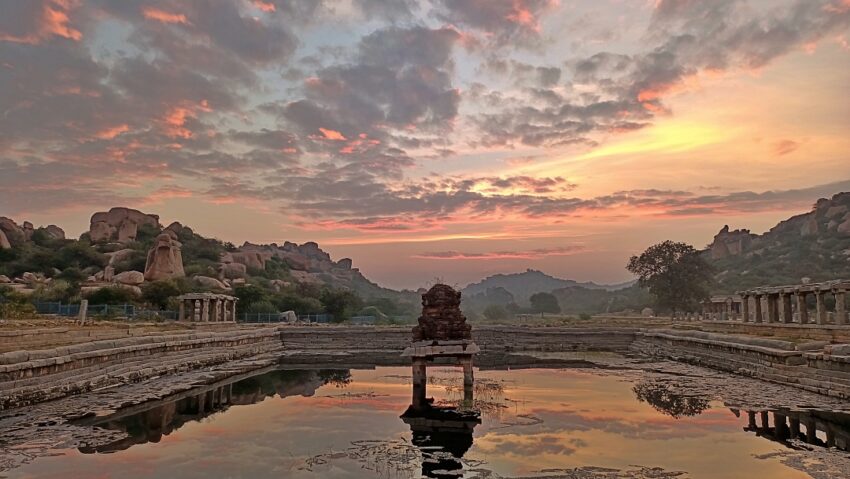
1 thought on “Hampi: The wonderland of ruins”